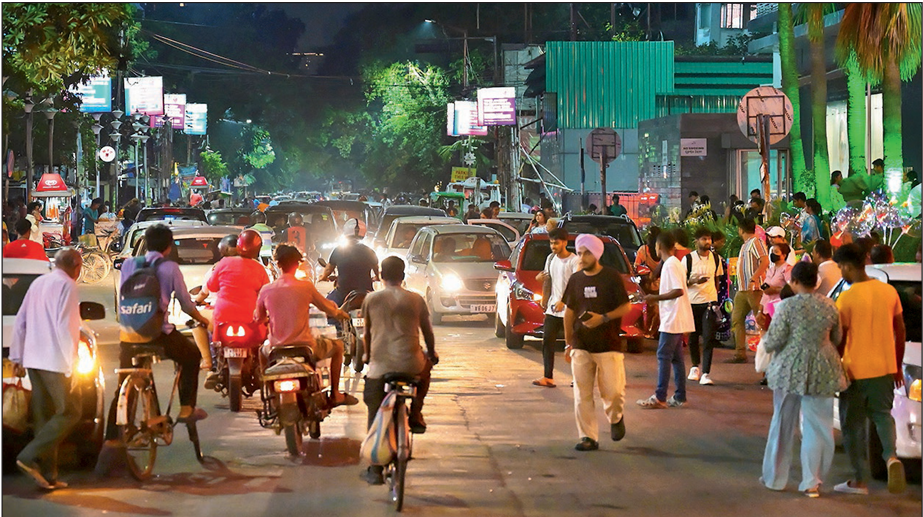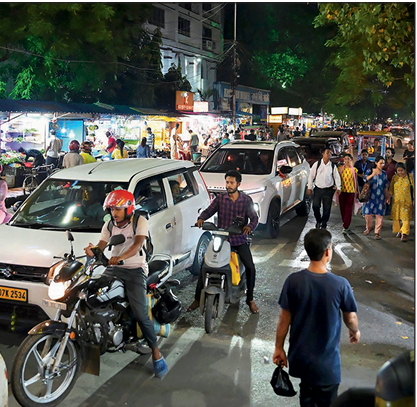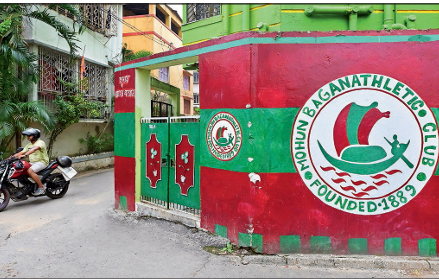Over the past four decades, metamorphosis of Kasba happened in three phases. First, from a rural hamlet to a semiurban area, then an urban area followed by a cosmopolitan makeover. Today it has emerged as one of the throbbing and happening localities in south Kolkata. The present cosmopolitan transformation began about 10 years ago, especially after the opening of a mall, retail stores, restaurants and bars in the locality.
RURAL ORIGIN
The locality, surrounded by paddy fields, swamps and ponds, wore a rural look till 1980s. During the British era, the area had scattered settlements of people, mostly from the working class. In Bengali, the word ‘Kasba’ means hamlet. Workers of leather factories at Tiljala, Tangra and Topsia used to live in shanties in the localities here.
The suburban railway connectivity in 1862 paved the way for migration of people to Ballygunge area. With a steep rise in the number of middle class migrants, people moved to the western side of Ballygunge railway station — the Kasba area. According to old residents, there were very few brick and mortar structures even after the Independence as people mostly lived in shanties and huts.
Now Kasba is home to several celebrities, including Tollywood actor Abir Chatterjee, footballer and politician Bidesh Ranjan Bose and lead singer of band ‘Bhoomi’, Surojit Chatterjee. Legendary musician and lyricist Salil Chowdhury lived in Ghoshal Para area of Kasba for some time and a park and a road in this neighbourhood have been named after him. During the 1970s and 1980s, Kasba was a hotbed of rowdysm and violence. In 1976, Satyajit Ray wrote ‘Bosepukere Khunkharapi’ (Murder in Bosepukur) for his Feluda series.

SEMI-URBAN TO COSMOPOLITAN
Construction of Bijon Setu in 1978 that linked Kasba with southern parts of the city was the first significant infrastructure development in this locality. In 1983, the one-way Rash Behari Connector was built to link areas like Rathtala, Rajdanga, Bosepukur and Haltu with Ballygunge, Gariahat and Kalighat. In 2000, the connector became two-way and eventually, the vehicular load increased on the stretch. Stand-alone apartments started coming up in the locality from 1990s after the opening of Eastern Metropolitan Bypass and gradually, the area got an urban look.
Krishna Kar (74), a resident of Rajdanga, recounted: “Farmers used to cultivate paddy along the road even in 1980s. Gradually, residential buildings sprung up on the cultivation land, turning the neighbourhood into a concrete jungle. Only two bus routes like 3C/1 and Bakultala-Howrah Mini existed in Kasba. After the development of EM Bypass, the routes were extended till Anandapur. Our para witnessed a cosmopolitan makeover over the years and my grandchildren don’t even believe the stories about old Kasba that we had seen.”
CIVIC INFRA
Even after the opening of RB Connector, the growth in Kasba, which was under Kolkata Metropolitan Development Authority (KMDA), had been sluggish for many years. In 2011, Kolkata Municipal Corporation (KMC) took over the area and developed it like other pockets of south Kolkata. Sushanta Kumar Ghosh, the local TMC councillor, said, “In 2010, there were ‘kacha’ roads in some areas of Kasba. After this locality came under KMC, the roads were improved and sewerage-drainage network was also built. Now there is no waterlogging in this locality. I have been living in Kasba since 2012 and this locality witnessed a sea change. There has been a strong bond with the old residents and I hope the same will develop with new residents in the future.”
SKYLINE TRANSFORMATION
The skyline of Kasba has changed with several high-rises coming up over the years and thus, new residential areas have formed on the fields and marshy lands. Development of civic infrastructure and amenities led to real estate boom in the area. And the realty price also jumped as the area underwent huge development. The price of a flat, which was Rs 650 per sq ft in 1996, jumped to Rs 1,500 in 2010. Now, it is Rs 8,000-Rs 9,000 per sq ft, according to real estate developers.
Ritesh Vimal, a resident of Rajdanga said, “Over the past 10 to 12 years, Kasba has witnessed significant infrastructure developments. The area now features a diverse mix of residential complexes, modern office buildings, shopping mall and retail outlets.”
Another local resident, Kapil Das, said, “With the development of new real estate projects, a parallel society of new residents has been formed. In the past 10 years, the real estate boom has been so fast that it is difficult to find vacant land here now.”

SHOPPING, FOOD & HANGOUT
Today Rajdanga has emerged as a shopping hub with various retail brands having opened their outlets. Till 1990s, residents of Kasba had to bank on Gariahat for shopping. During the erstwhile Left regime, Kasba New Market had come up in 2004 to rehabilitate around 300 traders displaced from Gariahat in the wake of KMC’s Operation Sunshine drive. This was the first organised marketplace in the area. However, the opening of Acropolis Mall in 2015 introduced a shopping momentum in the area as different brands came up with their stand-alone shops.
The locality has also turned into a hangout zone for youngsters. Soumen Seal, a resident of K N Sen Road, said, “Rajdanga has turned out to be the second Park Street and this area does not sleep even at 2 am when some restaurants and food corners remain open. This new hangout zone is, however, putting an end to our club culture.”
Vaibhav Kumar Thakur added, “The Salil Chowdhury Sarani has turned into a food street with several stalls selling various items at pocket-friendly rates.”
OFFICE & EDU PARA
Educational institutes, mostly schools, have made many people consider the Kasba area a preferred place to stay. With multiple bus routes via Kasba from different areas, including suburbs, several offices and start-ups have also come up along Rajdanga Main Road. Along with residential real estate, commercial realty projects are also on the rise in this locality.
Shreyasi Bhattacharya, whose office is situated in Acropolis Business Towers, said, “I am coming to work here for last two years. After work, visiting the mall, Kasba New Market or nearby food chains with colleagues is my regular routine.” Sreyasha Ghosh, a Baghajatin resident, said, “The transport has developed well. Apart from buses, auto and toto services have also come in handy.”

PUJA FERVOUR
Kasba is known for some top draw Durga Pujas like Bosepukur Sitala Mandir, Talbagan Sarbojanin and Rajdanga Naba Uday Sangha. Thousands of people from far-off places come to see these theme pujas. Besides, Dharmatala United Club’s Kali Puja is also known for its grandeur.
Kajal Sarkar, secretary of Bosepukur Sitala Mandir puja’s organizing committee said, “Our puja started in 1950 when this area looked like a village. I still remember there used to be a paddy field beside our puja ‘mandap’. Gradually, the puja shot into fame after we forayed into theme puja with focus on pandal decoration.”
Subhendu Ghosh, vice-president of Bosepukur Talbagan Sarbojonin Durgotsav committee, said, “Keeping pace with the transformation of our neighbourhood we have also given bigger dimension to our puja, which we started in 1992.”